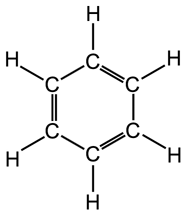- Messages
- 26
- Reaction score
- 16
- Points
- 3
How is this B??
We are currently struggling to cover the operational costs of Xtremepapers, as a result we might have to shut this website down. Please donate if we have helped you and help make a difference in other students' lives!
Click here to Donate Now (View Announcement)
How is this B??
I will assume you have understood the parts you did not highlight. So there would have been 42 hydrogen atoms, if it were just a straight chain alkane. We wish for only 28 to be left.The Sarcastic Retard qwertypoiu I need help in this question ...
Here i have posted the link for the question paper and my doubt is in question no 21 ....
I have even posted the explanation for Q21 which was answered previously .... My doubt is I don't get what they are trying to say in the part where i have highlighted ... so can one of you clarify it to me further.. Thanks in advance
https://docs.google.com/viewer?a=v&...sLm9yZ3x0ZWFjaGVyc3xneDoxYmI0OTYwOWIyZDRmNWVj
If the compound was an alkane and had no rings or double bonds, number of H atoms present = 2n+2 = 2(20)+2 = 42
Now, every time there're 2H less, you'll either have a double bond or a ring. The question states that there's one aldehyde (C=O) and 1 ring structure which has 1 C=C so this accounts for 6 missing Hydrogens, thereby leaving you with 8 missing Hydrogens.
8/2 = 4 Hydrogens in the aliphatic side chain.
However, total C=C are 5 because you have to include the C=C from the cyclohexene + cis formation hence A
Aluminium carbide, Al 4C3, reacts readily with aqueous sodium hydroxide. The two products of the
reaction are NaAlO2 and a hydrocarbon. Water molecules are also involved as reactants.
What is the formula of the hydrocarbon?
A CH4
B C2H6
C C3H8
D C6H12
someone explain this plz the answer is A
K2O + H2SO4 ----> K2SO4 + H2OUse of the Data Booklet is relevant to this question.
A sample of potassium oxide, K2O, is dissolved in 250cm3 of distilled water. 25.0cm3
solution is titrated against sulfuric acid of concentration 2.00moldm–3. 15.0 cm3 of this
acid is needed for complete neutralisation. of this sulfuric
Which mass of potassium oxide was originally dissolved in 250cm3 of distilled water?
A 2.83g
B 28.3g
C 47.1g
D 56.6g
oh i didnt multiply it by 10 he wanted it in the distilled solution.thx mate what r u studing?a levels or asK2O + H2SO4 ----> K2SO4 + H2O
Moles of acid = 15/1000*2 = 0.03mol
Moles of K2O in 25cm3 = 0.03mol, due to ratio.
Moles of K2O in 250cm3, = 0.03*10 = 0.3mol
Mass = (39.1*2+16)*0.3 = 28.26g
Welcome. Doing AS this yearoh i didnt multiply it by 10 he wanted it in the distilled solution.thx mate what r u studing?a levels or as
Thanks alotI will assume you have understood the parts you did not highlight. So there would have been 42 hydrogen atoms, if it were just a straight chain alkane. We wish for only 28 to be left.
6 hydrogen atoms are accounted for by the presence of aldehyde and ring structure. So 42-6 = 36 we'd expect now.
However we wish for 28. We need to eliminate 36-28= 8 more hydrogen atoms.
Every time a double bond is added to a saturated chain, 2 hydrogen atoms are gotten rid of.
Therefore, 8/2 = 4 double bonds required to satisfy our condition.
whats the answerIs there an easier way to find out the number of isomers? and for this question how many are there?? Please help!!
It's 9701/13/0/N/14
Oxygen in the air reacts with sulphur dioxide to form sulphur trioxide which then reacts with calcium oxide to form calcium sulphate.View attachment 54707 how is 2 important in helping to reduce atmospheric pollution? :/
Oxygen in the air reacts with sulphur dioxide to form sulphur trioxide which then reacts with calcium oxide to form calcium sulphate.
View attachment 54717 how do we read the benzene rings? why is C chiral and not D?

In C the Rings are different since OH is attached to different Carbon.hey you missed out the OH group attached to the benzene ring in option C (it wasn't printed properly)View attachment 54722 .. look at the question again
Pressure cannot affect Kc. Only temperature does.View attachment 54716 why is C wrong?
For almost 10 years, the site XtremePapers has been trying very hard to serve its users.
However, we are now struggling to cover its operational costs due to unforeseen circumstances. If we helped you in any way, kindly contribute and be the part of this effort. No act of kindness, no matter how small, is ever wasted.
Click here to Donate Now